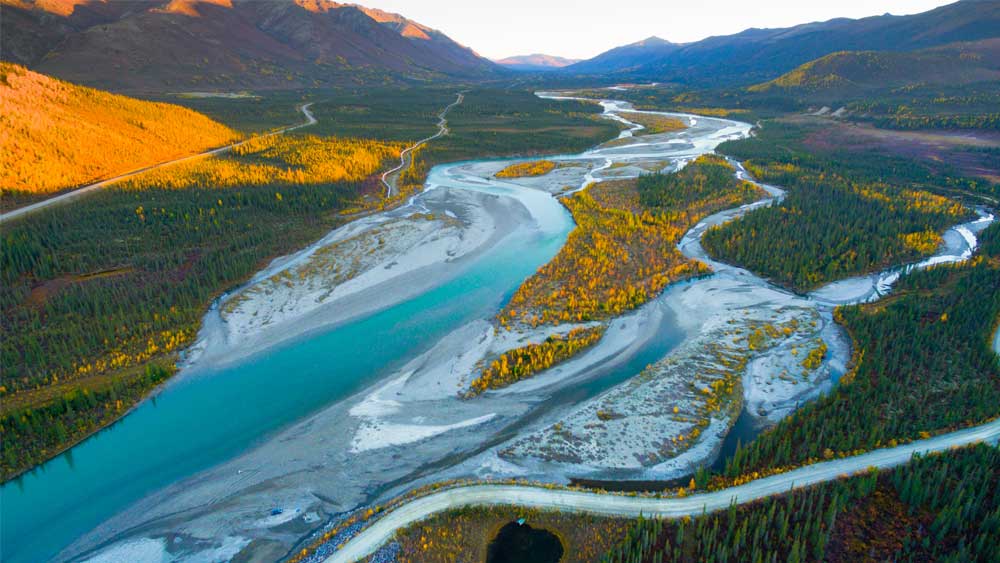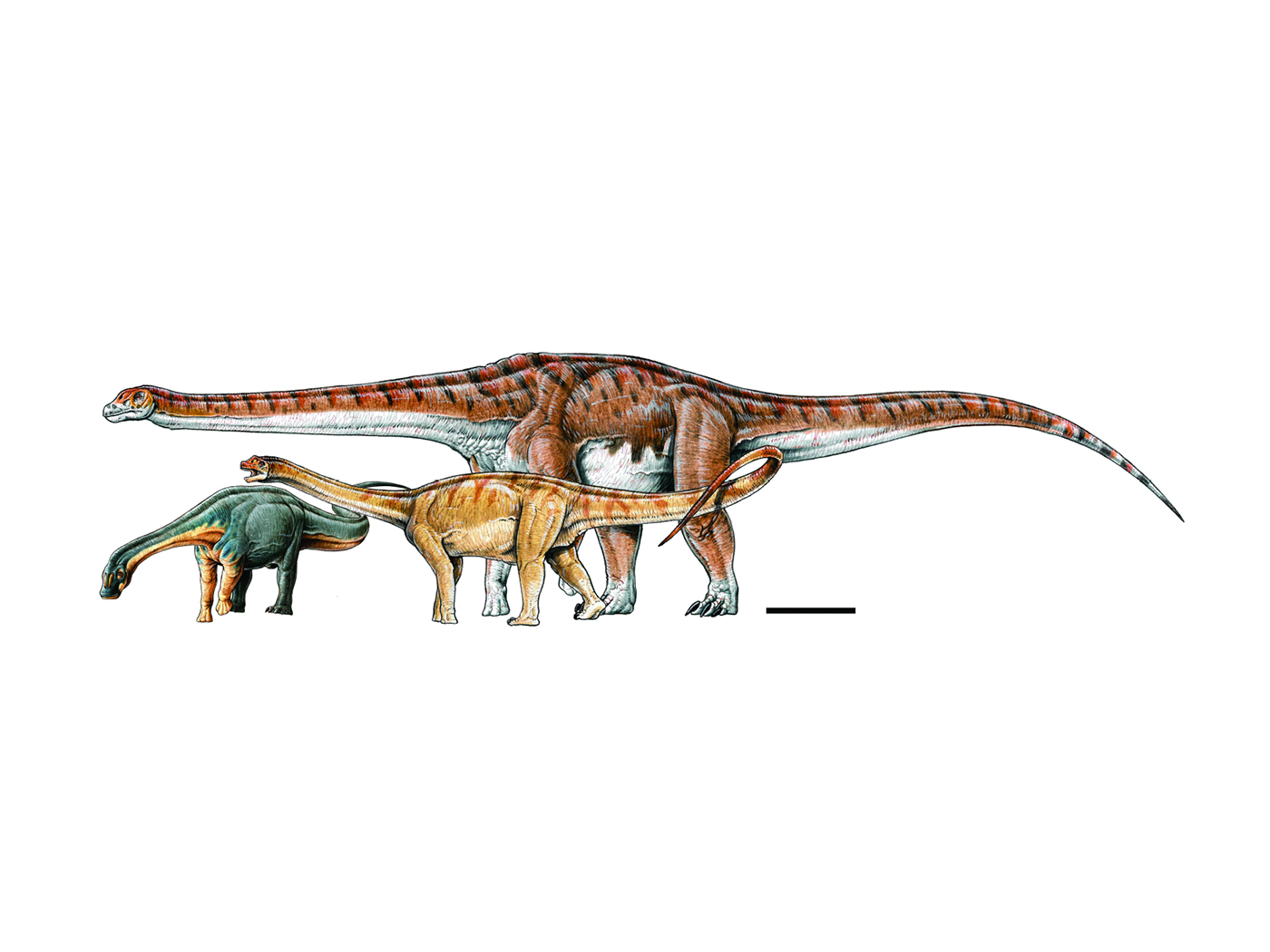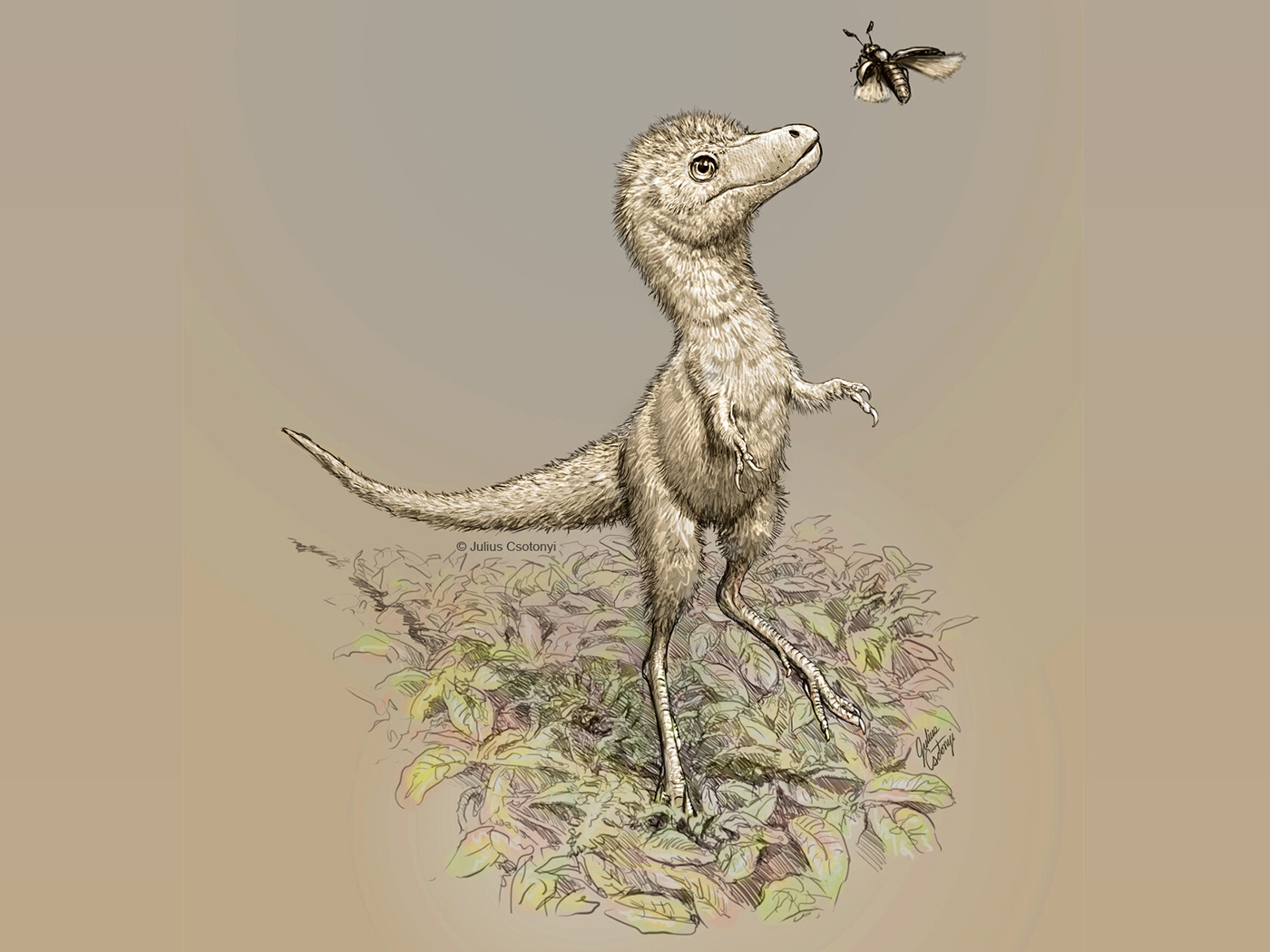Eight species of dinosaurs were recently unearthed in the Prince Creek Formation of northern Alaska.1 The latest discovery, published in Current Biology, claims the bones were near the North Pole at the time of their burial in Cretaceous System rocks (about 80-85 degrees north latitude).1 This would give the region about 120 days of total darkness each year, making it difficult for dinosaurs to survive in such an extreme cold climate.1 Evolutionary theory provides no explanation for why dinosaurs would be buried in such environments—but Bible-based Flood geology does.
For 70 years now, dinosaurs found in supposedly polar climates have baffled secular paleontologists due to the cold conditions they would have faced and the long periods of darkness involved. Previously, dinosaur fossils and their egg shells were found in northeastern Russia, at a paleolatitude2 (which means their supposed latitude at the time of burial, before the shifting of tectonic plates) of about 70-75 degrees north of the equator. This latitude would have given about 45 days of total darkness per year.3
Last year, evolutionary scientists announced the discovery of dinosaurs in southeastern Australia that they claimed were deposited at a paleolatitude of 76 degrees south of the equator.4 Lead author Patrick Druckenmiller, from the University of Alaska Museum of the North told New Scientist: “We knew dinosaurs had been there, but we didn’t know if they could deal with the cold or even the darkness of winter.”5
In the past, most evolutionary paleontologists assumed that dinosaurs migrated to extreme high latitudes during the long summers and migrated away in the winter months. But the most recent discovery included many eggs, hatchlings, and juveniles in the cache of bones, indicating that these dinosaurs couldn’t have migrated.1
“There’s good evidence that these dinosaurs had incubation periods of over five months,” said Druckenmiller.5 This means that if the dinosaurs laid eggs in the spring, they wouldn’t have hatched until fall. These new hatchlings would have been too small to migrate the great distances necessary to escape the cold and darkness of winter. This implies the dinosaurs were year-round residents of these locations.
So, what gives? How could dinosaurs live so far north and south of the equator and at such high latitudes where the mean annual temperatures were about 50 degrees Fahrenheit or less? Secular science offers no adequate solution to this dilemma.
But ICR scientists have a better explanation, and one that is based on rock data. Our Column Project team has mapped out the megasequences and sedimentary rocks across multiple continents.6 We used these data to reconstruct the pre-Flood land masses and their environments. It resulted in a pre-Flood world that resembled Pangaea and was centered at the equator.6 In fact, nearly all of the land was at latitudes of less than 45 degrees north or south of the equator.
Our reconstruction places the newly discovered dinosaurs in Alaska at about 35-40 degrees north latitude in the pre-Flood world—not at 80-85 degrees where the researchers placed them.6 This provides a much more moderate climate where dinosaurs could thrive. These dinosaurs didn’t live in the far north, nor was Alaska this far north in the original Creation. It wasn’t until rapid plate motion during the Flood that these buried dinosaurs were moved to their present location in Alaska of about 70 degrees north latitude. They were never at 80-85 degrees north.
ICR’s plate reconstructions also place the other discoveries of high latitude Russian and Australian dinosaurs at similarly moderate latitudes in our pre-Flood world.4,6 Explanations of extremely high paleolatitude survival is only an evolutionary fairy tale.
Jesus had a perfect plan for His creation. Dinosaurs were placed in warm and moderate climates. It wasn’t until the wickedness of mankind brought on the judgment of a global flood that these dinosaurs were inundated and their bones moved far from their original locations. The Bible provides the answers.
References
1. Druckenmiller, P.S., et al. 2021. Nesting at extreme polar latitudes by non-avian dinosaurs. Current Biology. 31. DOI: https:// doi.org/10.1016/j.cub.2021.05.041
2. Paleolatitude refers to the supposed past location of the rock layer during its deposition and also where the animals found as fossils were assumed to have lived. Secular science places northern Alaska at extreme high latitudes in the Cretaceous. Contrary to these evolutionary reconstructions, the pre-Flood location is the actual location where the animals resided prior to their inundation. Our reconstructions place these dinosaurs at much more modest latitudes. Later plate movement during the Flood moved Alaska to its present location.
3. Godefroit, P., et al. 2009. The last polar dinosaurs: high diversity of latest Cretaceous arctic dinosaurs in Russia. Naturwissenschaften. 96:495–501. https://doi.org/10.1007/s00114-008-0499-
0.
4. Clarey, T. 2020. New Australian dinosaur surprises evolutionists. Creation Science Update. Posted on ICR.org May 27, 2020, accessed July 29, 2021.
5. Duke, C. 2021. Dinosaurs lived in the Arctic around 70 million years ago. New Scientist. 3341, published July 3, 2021, accessed July 29, 2021.
6. Clarey, T. 2020. Carved in Stone: Geological Evidence of the Worldwide Flood. Institute for Creation Research, Dallas, TX, pp. 178-179.
*Dr. Clarey is Research Scientist at the Institute for Creation Research and earned his doctorate in geology from Western Michigan University.

North Pole Dinosaurs Point to the Flood
The Latest
May 2024 ICR Wallpaper
"Have I not commanded you? Be strong and of good courage; do not be afraid, nor be dismayed, for the LORD your God is with you wherever you...
Was a Key to Photosynthesis Evolution Discovered?
Northern Canadian lakes were the source of recently discovered unique photosynthetic bacteria of the phylum Chloroflexota. After years of culturing,...
CREATION PODCAST
Four Moons That Indicate a Young Universe | The Creation Podcast:...
Earth has one moon, but Jupiter has many! What can we learn from our celestial neighbor's satellites? Do they indicate youth?
Host...
Creation Kids: Seeds and Sprouts
by Renée Dusseau and Susan Windsor*
You're never too young to be a creation scientist and explore our Creator's world. Kids, discover...
APOLOGETICS
Christ’s Creativity in Canyon Critters
Grand Canyon animals display many marvelous traits and behaviors as they live life in that harsh habitat. These canyon creatures succeed thanks to the...
Standing Against False Science
I’m Michael Stamp, and I’m in my 12th year as an editor at the Institute for Creation Research. It’s always an encouragement to see...
Oysters and Pre-Flood Longevity
The oyster species Crassostrea virginica, also known as the eastern oyster, is a prized seafood. Research has demonstrated that a fossil version of...
Galápagos Finches: A Case Study in Evolution or Adaptive Engineering?
A group of birds known as Darwin’s finches live in the Galápagos Islands, which are located in the Pacific Ocean 600 miles west of Ecuador....
Hot Springs National Park: Hydrothermal Springs Formed By The...
Hot Springs National Park is located about an hour southwest of Little Rock in the folded Ouachita Mountains of central Arkansas. It is the second smallest...
Why Biology Needs A Theory of Biological Design—Part 2
“Based on a true story” is included by movie producers to add authenticity, importance, and a flair of anticipation. So, my account of how...























